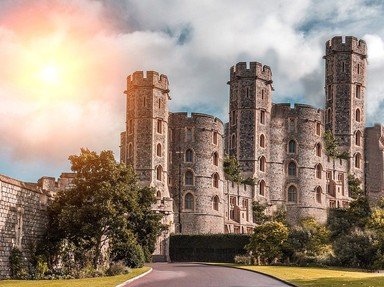Quiz Answer Key and Fun Facts
1. In which century was Bodiam Castle constructed?
2. Unlike many castles built after the Norman Conquest, Bodiam Castle did NOT have which feature commonly associated with castles?
3. Despite being a castle, Bodiam Castle has a number of large windows built into the castle's outer walls. What was NOT a reason for these windows to be built?
4. Was the hole in the castle kitchen's fireplace used for baking bread?
5. In the roof to the main gatehouse and postern tower are a number of holes in the ceiling. What was the purpose of these holes?
6. Around the castle can be found many small chambers with wooden seats, what were these used for?
7. The well in this picture located in the south west tower of Bodiam Castle, providing water for those living inside the castle. However, what did the castle inhabitants actually drink on a day to day basis?
8. Why is the interior of Bodiam Castle now a ruin?
9. Was the moat surrounding Bodiam Castle more ornamental than defensive?
10. Not all the defences at Bodiam Castle were built at the same time as the castle. When was this pillbox in the castle grounds built?
Source: Author
mcsurfie
This quiz was reviewed by FunTrivia editor
trident before going online.
Any errors found in FunTrivia content are routinely corrected through our feedback system.


